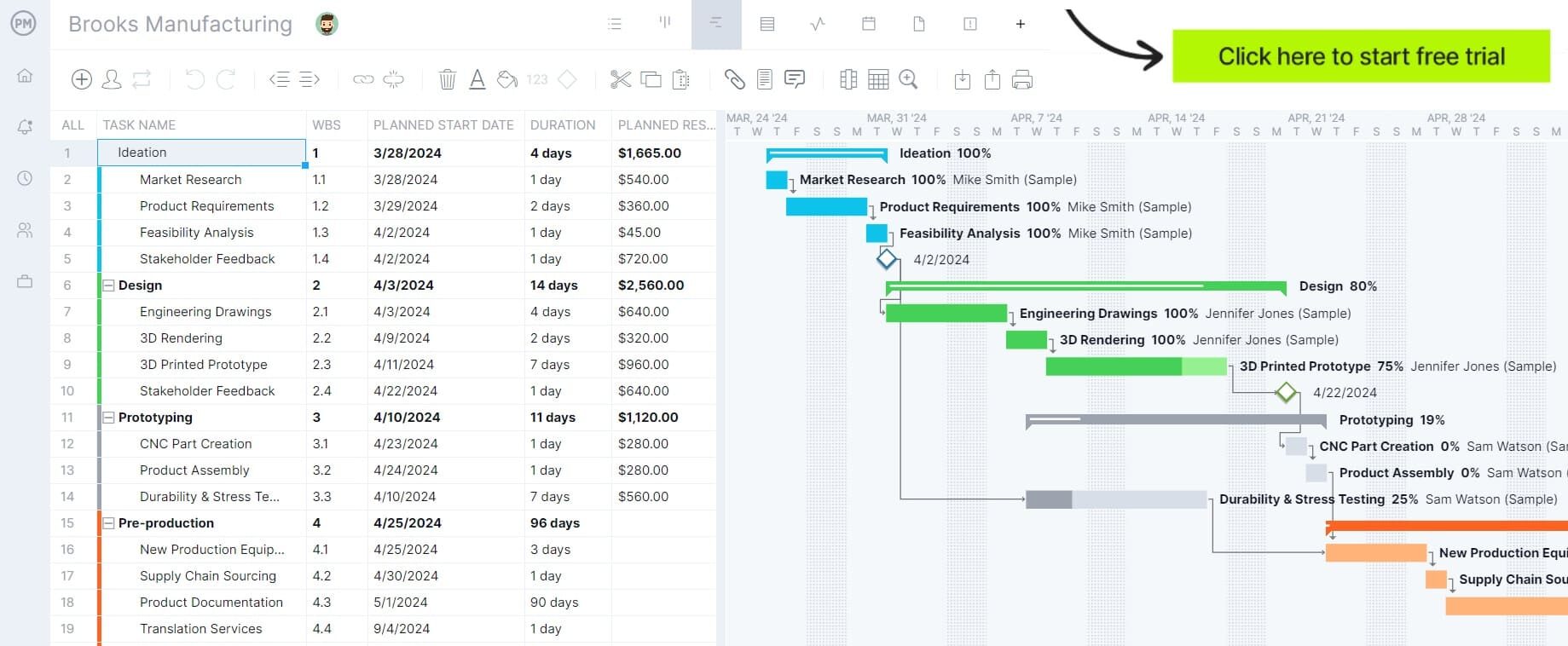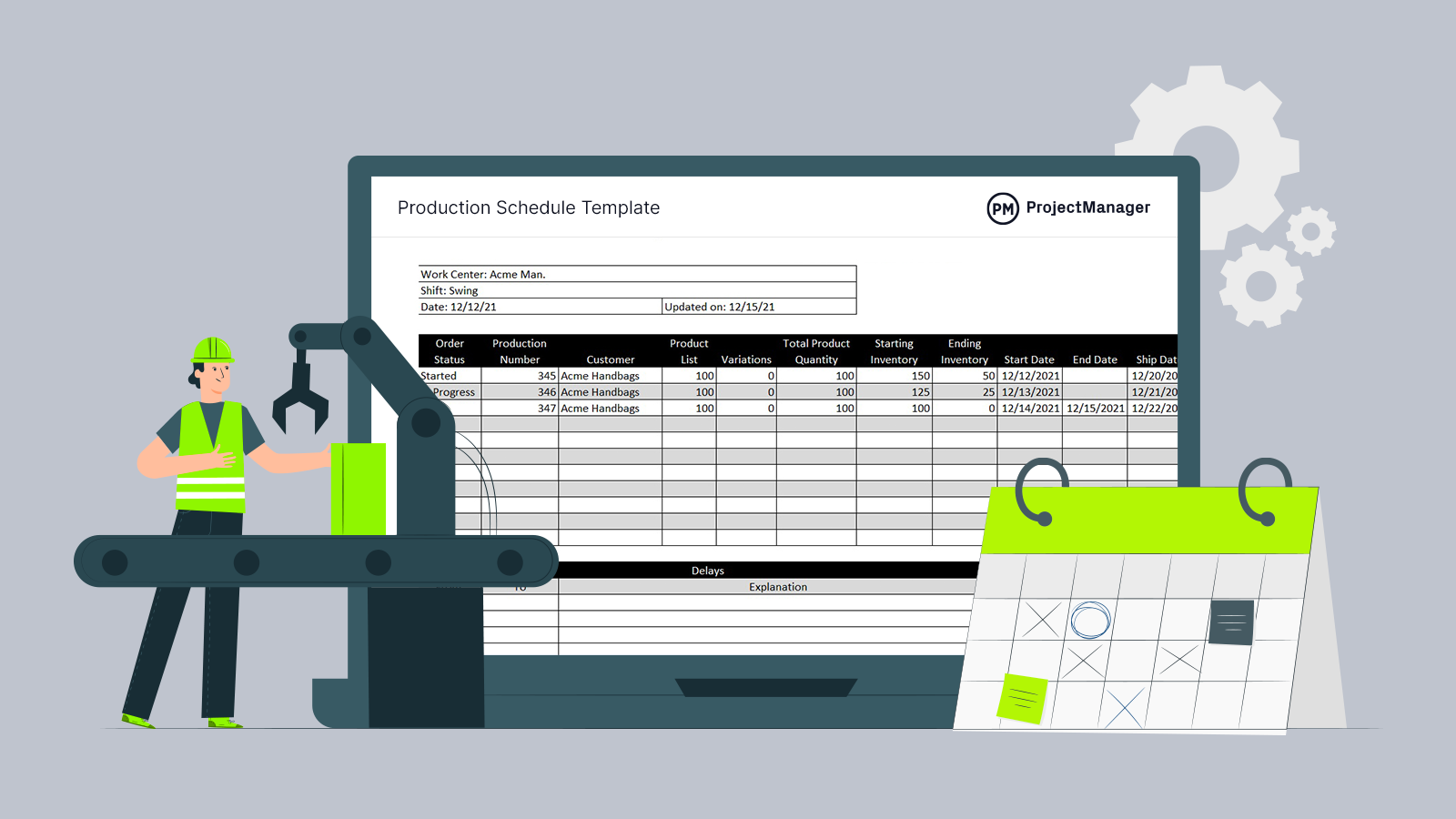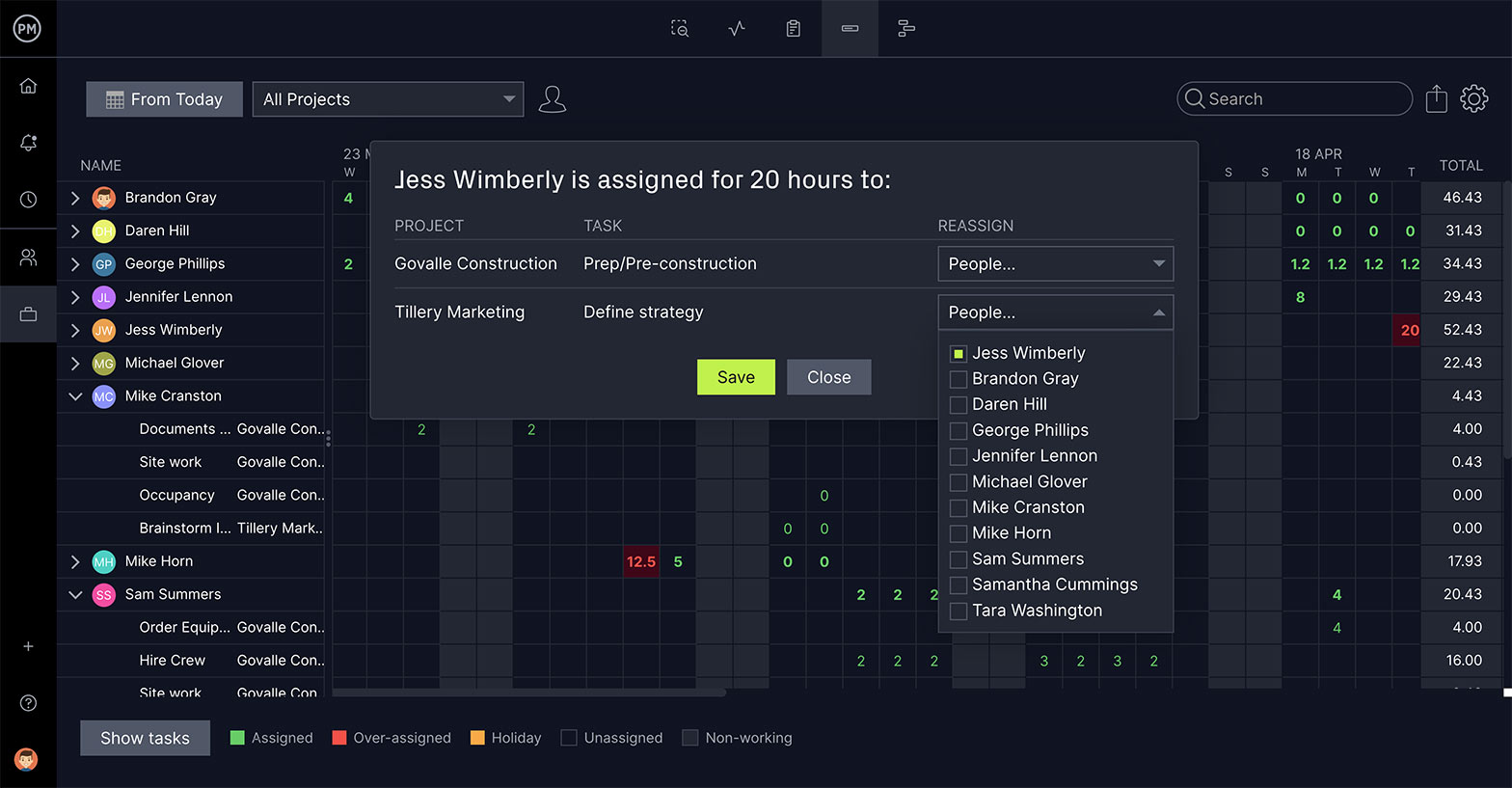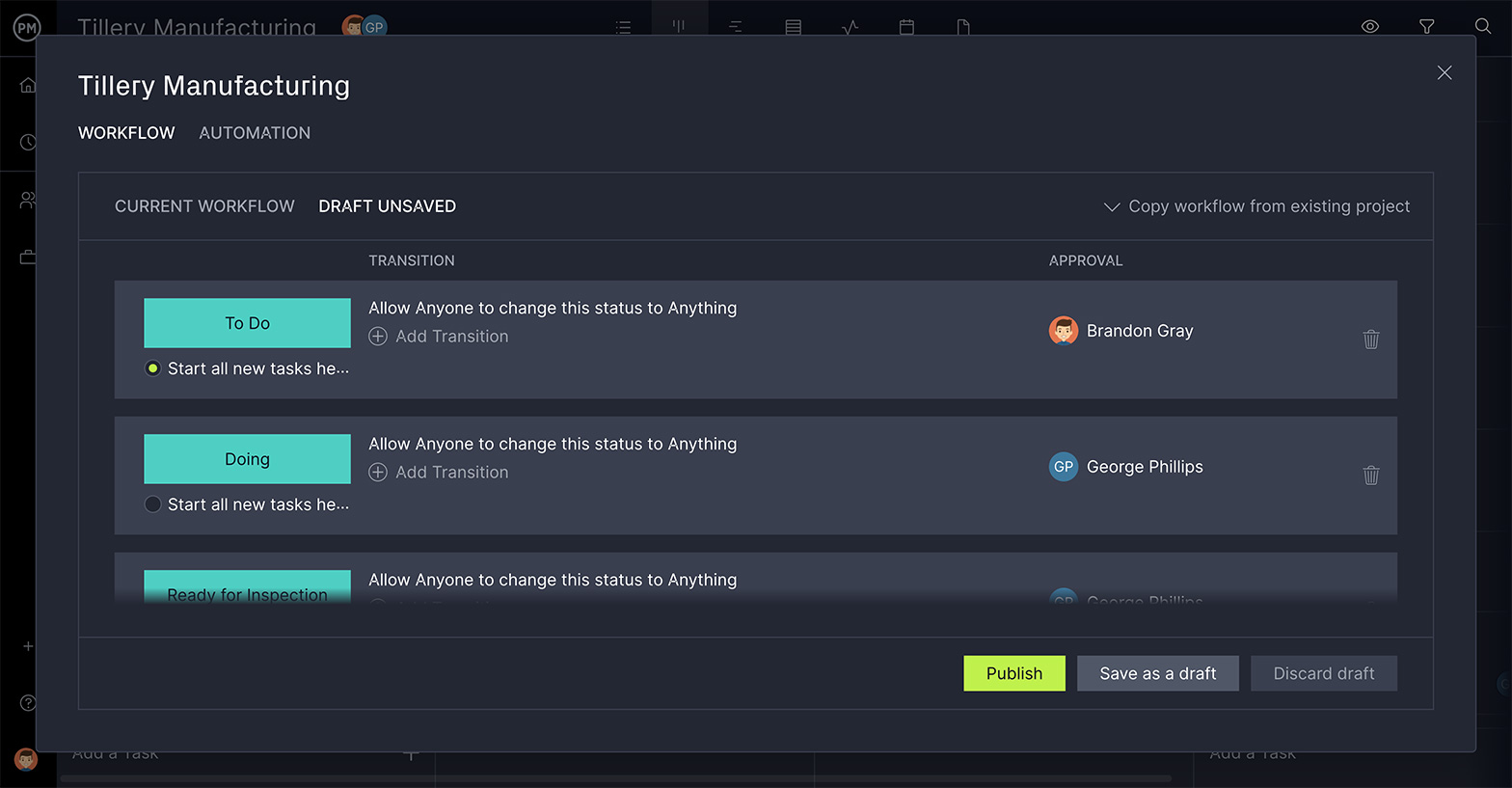Certain manufacturers use a recipe to combine materials to deliver products. This is called process manufacturing and is a production method that’s common when producing in bulk. To better understand process manufacturing, let’s first define the term and explore the different types of process manufacturing.
We’ll then outline the top benefits and provide a few examples across industries to make process manufacturing clear. Of course, there are other methods of production that manufacturers use, and we’ll touch on those as well.
What Is Process Manufacturing?
Process manufacturing is a method of combining supplies, such as ingredients or raw materials, and using a predetermined formula or recipe to produce something. The process manufacturing production method is commonly used in bulk production and follows sequential steps.
The list of items that are produced by process manufacturing is varied. One example is food and beverages, but it can also be found in oil refining, the production of gasoline, pharmaceuticals, personal care products, cosmetics, specialty chemicals, plastics, metals, paints and even alcohol.
When doing process manufacturing, it’s important to follow specific steps. One step must be completed before starting the next step. There are also specific conditions that process manufacturing must follow regarding heat, time and pressure. These conditions result in thermal or chemical changes that are irreversible. Process manufacturing is permanent, which is why production must be followed with precision.
Controlling process manufacturing production is assisted by project management software. ProjectManager is award-winning project management software with powerful kanban boards that visually map out manufacturing processes to ensure everything is done properly. Then, Gantt charts can help visualize phases to show the overlapping nature of a continuous process and highlight where one stage flows into another. Try ProjectManager free for 30 days.

Continuous Process Manufacturing
A type of process manufacturing is continuous process manufacturing, which refers to production that runs 24 hours a day, seven days a week. Also called flow manufacturing, this nonstop type of process manufacturing is traditionally used when manufacturing high-volume products that don’t require customization.
Some of the products you’ll find being produced by continuous process manufacturing include paper and pulp, petrochemicals or oil and gas refineries. These products are used continually so they’re ideal for continuous production as they ensure supply and make efficient use of machinery.
The advantages of using continuous process manufacturing are many. For one, it lowers manufacturing costs by running all the time. In turn, this leads to faster production and an improved ability to scale up. The use of automated production and predictive maintenance also adds to the benefits. But continuous process manufacturing requires a higher initial investment than other manufacturing methods.
Batch Process Manufacturing
On the other side of the process manufacturing spectrum is batch process manufacturing. This is where a group of the same products are produced at the same time. The batch can be big or small, depending on the manufacturer, as well as the frequency of manufacturing these batches.
With batch process manufacturing, each batch goes through a separate stage in the manufacturing process. Like process manufacturing, that means that one stage must be done before another stage can begin. However, specifications can change from one batch to the next.
Quality checks are made after each step in the production cycle and machinery is tested between batches to make sure it’s performing as expected. This allows for a level of flexibility that isn’t available in many other manufacturing processes.

Get your free
Production Schedule Template
Use this free Production Schedule Template for Excel to manage your projects better.
Benefits of Process Manufacturing
We’ve already touched on the advantages of process manufacturing, but it’d be a disservice to not dig deeper into explaining the benefits. For one, it’s cost-effective. Manufacturing used to make things by hand or construct complex individual products that needed many unique parts. Process manufacturing works in bulk without substantial human labor. It decreases labor costs, adds efficiency and, by so doing, increases the profit margins.
Another benefit of process manufacturing is that it makes the allocation of costs easier, allowing for the logical administration of all aspects of the production line. This helps businesses allocate resources when needed. It also helps managers make adjustments and collect data from various points along the process, enabling them to make better decisions.
Process manufacturing makes product targets and procedures transparent. This allows teams to know what they need to do and supervisors can assess their performance accordingly. In other words, it improves communication and staff morale. Keeping the lines of communication open also allows for feedback from the people on the production line, which can lead to greater efficiency in terms of manufacturing processes, further improving staff motivation and focus on objectives.
The goal of process manufacturing is to make production simple without sacrificing quality, which is why it embraces automation. That removes human error from production and, with close monitoring, captures issues that can be documented, traced to their origins and resolved. It also leads to improved safety on the production line.
Related: 10 Free Manufacturing Excel Templates
Process Manufacturing Examples
Knowing process manufacturing by defining it and its benefits is only part of the larger picture. Exploring the various industries that use it and showing examples of how it’s applied can broaden our understanding. Let’s look at a few process manufacturing examples in some of the major industries that use the production method.
Pharmaceutical Industry
Process manufacturing is used in the pharmaceutical industry for both over-the-counter and prescription medications. These require high levels of quality control management to closely monitor the sophisticated formulation. It’s also highly regulated by the government, which further requires quality control. Operations can include blending, granulation, milling, coating, tablet pressing, filling and others.
Food & Beverage Industry
The food and beverage industry also uses process manufacturing as well as the packaging companies that allow the food and beverages to be distributed. You can find its use in dairy and meat products, commercial baked goods, sauces, alcoholic beverages and juices, among others. Process manufacturing focuses on recipe development and maintenance. But there are also manufacturing systems and the use of quality control management that are required to meet health regulations.
Chemical Industry
The chemical industry, often bundled with tire and process and abbreviated as CTP, makes up a large portion of manufacturing. It uses process manufacturing to convert raw materials into final and intermediate products. Chemical industries will also incorporate batch manufacturing. That is, a refinery output can go straight to a chemical plant, a petroleum chemical facility or used for raw materials when manufacturing tires.
Free Production Schedule Template
Process manufacturing ties closely with production schedules and it’s important to ensure quality at every phase. To help improve your manufacturing production and remain profitable, download our free production schedule template for Excel.

What Other Types of Manufacturing Methods Exist?
Of course, there isn’t only one manufacturing process. There are many. One of the newest is 3D printing, which has only recently been in widespread use. This technology was developed in the 1980s using various composites and materials to make three-dimensional goods lay by layer based on a digital model. It’s used in the production of medical and dental devices, prosthetic limbs, firearms and more.
Other types of manufacturing methods have been around for much longer. Machining uses power-driven tools to shape solid materials and metal, usually by trimming. It’s considered the foundation of the manufacturing industry, including such things as presses, chip-making tools and modern machinery.
There’s also joining, such as bolting as a fastening method. Forming, which bends, spins or stretches metal presses while casting is when a solid is dissolved into a liquid and poured into a mold or cavity. Casting can create complex or simple designs from meltable metal, so there’s a wide range of designs for this manufacturing process.
Process Manufacturing vs. Discrete Manufacturing
We’ve learned that process manufacturing is about creating recipes to produce a product. It includes products such as food and beverages, chemicals and others that are made by combining supplies, ingredients or other raw materials according to a formula.
Discrete manufacturing, on the other hand, produces a product using the same parts and the same quantities. The finished product is always the same. It uses standard, specific parts and if a part isn’t meeting quality standards, it’s rejected. This contrasts with in-process manufacturing where quality control detects a variance and the formula is adapted to bring the final product up to specification.
Yields can vary in process manufacturing, while discrete manufacturing produces an exact amount of finished products. The basic difference can be boiled down to process manufacturing relies on formulas and discrete manufacturing assembles parts in a prescribed process to produce a distinct item.
How ProjectManager Helps With Process Manufacturing
Whatever type of manufacturing method you employ, project management software is critical to planning, managing and tracking that work in real time. ProjectManager is award-winning project management software that helps manufacturers automate workflows while maintaining quality to add efficiency and speed to their manufacturing processes. Learn how we manage your resources and control your costs.
Automate Workflows Without Sacrificing Quality
Workflow automation is one of the many tools our software offers to give your manufacturing process greater efficiency. Our workflow automation uses simple triggers such as status, priority, progress, etc., to create actions such as assigning a user, adding a tag, setting a priority or status, etc. You can add multiple triggers for multiple actions and there’s no coding involved. To ensure that your workflow is delivering quality, use task approval settings so only an authorized person can approve the work.

Manage Costs With Resource Management Features
Another way to manage your manufacturing process and keep costs down is by controlling resources. You can schedule resources and costs on our robust Gantt charts and set up available for your production crew to make scheduling work easier. Once everyone is assigned, toggle over to the workload chart. It’s color-coded to make it easy to see everyone’s allocation. If someone has too much work, reallocate those resources right from the chart to keep everyone working at capacity and productive.

There are other features you can use to manage risks and tasks and streamline the payroll process with secure timesheets—all vital to running a smoothly operating production line. Use multiple project views so everyone can view the project with the tools they prefer. All views update in real time to keep everyone on the same page.
ProjectManager is online project management software that connects teams whether in the office, on the production floor or anywhere in between. Share files, comment at the task level and more. Always know where your work is and accurately forecast delivery for customers. Get started with ProjectManager today for free.


